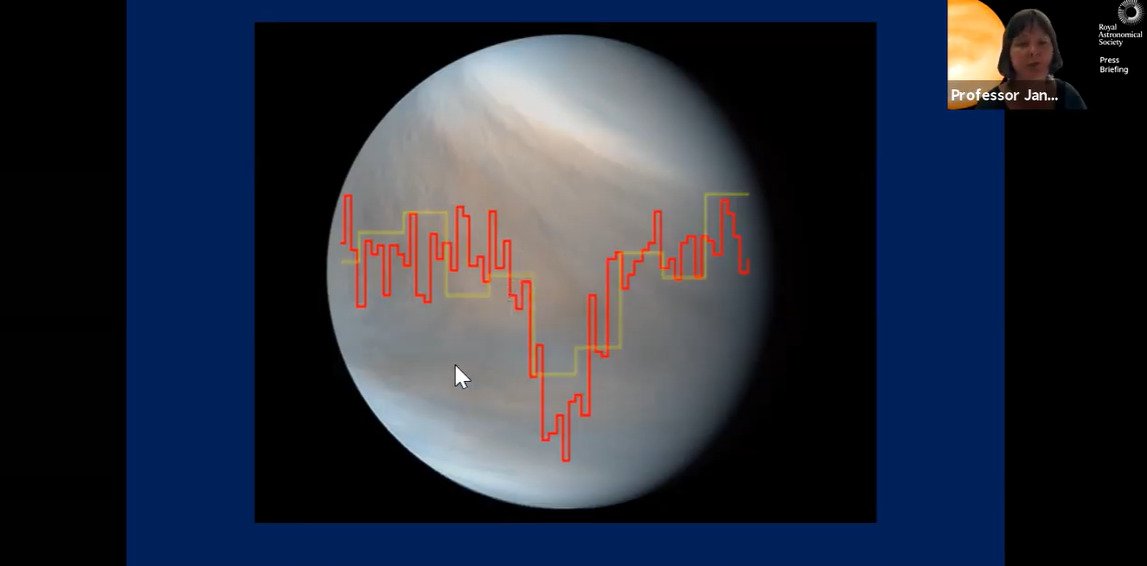Scientists Detect Markers of Life on Venus

Scientists from the Royal Astronomical Society made a fantastic announcement today in England. Finally, we are not alone in the solar system and there may be life on Venus!
Well, kind of.
No one has found little green women on Venus, but what scientists have discovered in the atmosphere of next-door neighbor in the solar system is signs of life, and that’s still really cool. And how they did it is even cooler.
For a long time, there was somewhat of a consensus that life could not exist or survive on Venus. It’s a harsh planet for sure, and though it’s similar in size and landscape to earth, the runaway greenhouse effect of Venus’s thick atmosphere means temperatures on the planet’s surface can run around, oh, 900 degrees Fahrenheit. That atmosphere is also incredibly acidic. Like, 90% acidic.
But it’s in the atmosphere, which is 10 times thicker and higher than Earth’s, where life might exist, scientists posit. And with this announcement, that’s what the scientists have found. Led by Professor Jane Greaves of Cardiff University in Wales, the Royal Astronomical Society today confirmed that they have discovered the chemical phosphine in the atmosphere of Venus. And that’s a sign of life, not a confirmation, but a definite sign.
According to Greaves, phosphine is “ammonia’s evil cousin,” in that it’s extremely close in chemical composition. But most important, Greaves told the audience in a live-streamed press conference, “We know the molecule phosphine is a biomarker on earth.”
Greaves’ team found the phosphine high in the atmosphere, where things are slightly less harsh than on the surface. Liveable temperature, and favorable air pressure for microbes. But then again, these are clouds made of 80% sulfuric acid, so it’s still not ideal for life.
But how did these scientists find monocules on a planet 30 million miles away? This is the cool part: Using radio two telescopes, the James Clerk Maxwell Telescope in Hawaii and that ALMA array in Chile. What these astronomers and astrobiologists did was look at very small slices of the wavelengths of light coming from Venus. Those wavelengths showed dips at certain points that showed the presence of phosphine! They used lots of math and incredibly precise tools to do this and boom, markers of life on another planet. That’s mind-blowingly cool.
So why is there phosphine there? That’s the mystery. There are no chemical processes on Venus that can account for the amount of phosphine in the temperate zone of the atmosphere. We do find phosphine on Jupiter and Saturn, but there are different conditions there (much less hydrogen in the atmosphere) … so maybe there’s something in Venus’s atmosphere that accounts for it. The scientists don’t know of it, but nothing on Venus or in her atmosphere should make phosphine.
Professor Sara Seagar was careful to point out that they haven’t found life on Venus, only a gas that is a marker of life. Either it’s life or a new chemical process that no one has ever seen before. They don’t know. But on Earth phosphine is created by microbes that thrive in environments with no oxygen, and as Greaves noted, “it’s very hard to explain the presence of phosphine without life.”
So, no aliens per se, but still an incredibly cool discovery on Venus that changes our entire understanding of the planet, and potentially our ideas of what “life” is and how it can, uh, find a way. The next step is sending missions to Venus to specifically measure chemicals, microbes, and gases. That’s not easy, but neither is discovering specific gases and potentially microbes on another planet. We don’t know enough to say with certainty that there is life on Venus, but there are signs.
(image: Screengrab)
Want more stories like this? Become a subscriber and support the site!
—The Mary Sue has a strict comment policy that forbids, but is not limited to, personal insults toward anyone, hate speech, and trolling.—
Have a tip we should know? tips@themarysue.com